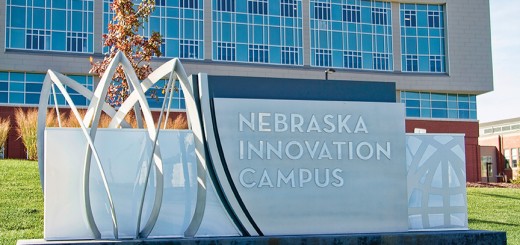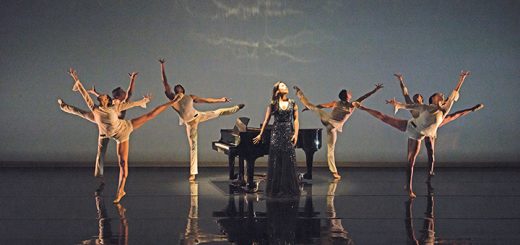Timeless Treasures: The Museums of Lincoln

by Julie Nichols
Lincoln is home to so many museums that appeal to multiple and special interests, many within easy walking distance in the downtown and east campus areas.
Morrill Hall-University of Nebraska State Museum
Known to Nebraska schoolchildren as Elephant Hall, this natural history museum has been a beloved destination for generations of Nebraskans. Famed for its collection of prehistoric elephant ancestors, a life-sized bronze mastodon known as Archie stands at the entrance. Inside, the world’s largest articulated Columbian mammoth skeleton commands the first floor collection. See more on page 36.
Whether visitors already appreciate natural history, returning to a childhood pleasure or simply on a family outing, this museum is remarkably satisfying. With an on-site planetarium, a photo gallery of endangered species by noted wildlife photographer and native Nebraskan Joel Sartore, our old Elephant Hall retains great appeal. See page 36 for more information. As a member of Museums for All, admission for SNAP, EBT and WIC cardholders is a dollar, adults $12.50, children over three $6.75.
Sheldon Museum of Art holds a distinguished collection of 19th and
20th century art housed in a building designed by Phillip Johnson. Sheldon
exhibits travelling shows and works from its collection which includes nearly 30 outdoor sculptures installed on UNL’s downtown campus. Work by luminaries
Claes Oldenburg, Richard Serra, Jun Kaneko, Gaston Lachaise and others is well worth walking through campus. See more on page 13.
The popular Lincoln Children’s Museum drives imagination on all three levels of this interactive museum. Pilot an airplane or blast off in a space capsule! Here We Grow, a new exhibit, explores agriculture and farming, and the Luckey Climber, a structure three stories high (the first of its kind in Nebraska), invites children to climb and explore. This learning-driven museum includes a large water feature that invites interactive science experiments, a kid-sized prairie dog town and the Johnny Carson Stage with costumes, makeup, lights and sound. Located downtown with parking and restaurants nearby. See page 56 for more information. See more on page 56.
The International Quilt Museum at 33rd and Holdrege (East Campus) is the preeminent quilt museum in the world. With over 8,000 quilts in its collection representing 65 countries and spanning three centuries, exhibitions are skillfully curated and change throughout the year. The quilt museum displays studio art quilts from notable artists as well as historical quilts and those from many American traditions. For more information see page 54.
National Museum of Roller Skating
This tiny specialty museum chronicles the development of the roller skate and its various applications throughout history. From skate rinks to competitions to roller derby, this charming and thorough collection of skate technology, artifacts, popular culture items, images, stories and print material is pure homage to a great and popular sport. Whether visitors are skate fans or not, this museum is a delight. Admission is free.
American Historical Society of Germans from Russia
Located at 631 D Street, this fascinating and important cultural heritage museum, the AHSGR holds the largest collection in the western hemisphere of documentation of Germans from Russia, a group that settled in this area. Through photos, quilts, musicals instruments, wedding dresses and domestic items, the story of Germans from Russia unfolds, aided by replicas of outbuildings — a summer kitchen, church, blacksmith shop, store and barn. A trove of research is accessible through AHSGR archival resources: genealogical records, letters and photos, gravesite search tools, federal land records, obituaries, the Karl Stumpp book, which contains alphabetical record of thousands of German immigrants to Russia, information on the starvation of Volga German colonists in Russia and the American Volga Relief Society, which attempted to supply food and aid to the region.
Nebraska History Museum
Downtown, 131 Centennial Mall North, is open on Tuesday – Saturday: 9:00 AM – 4:00 PM
Discover 12,000 years of history! Diverse peoples and cultures have shaped Nebraska into what it is today. Our collections feature over 125,000 artifacts, and we are constantly adding new pieces that capture the essence of Nebraska’s past. Visit us to explore intriguing relics and hear captivating stories that bring our vibrant history to life.
The Museum of American Speed
Declared the finest museum of automotive history
in the nation by USA Today, this museum’s incredible collection follows racing, engine development and automotive innovations since the invention of the automobile.
Covering all aspects of automotive history, collections include mechanical innovation and the racing industry — land speed, luxury, and hot rods. In addition to cars, the museum addresses autos in popular culture — pedal cars, vintage bicycles, and soapbox derby. A gallery of automotive artwork examines how images influence racing culture.
The museum recently adding 90 thousand square feet of space, rotating exhibits from names like the Unser Racing Museum and Darryl Starbird Rod and Custom Hall of Fame have room to grow. New exhibits are in development for NASCAR, SCCA Hall of Fame and factory GM displays. See page 83 for more information.
The Larsen Tractor Test and Power Museum
Since no tractor can be sold in Nebraska without first being tested, Lincoln became home to the the Larsen Tractor Test and Power Museum on the University of Nebraska’s East Campus at 35th and Fair Streets. The museum offers and impressive collection of historic, restored tractors and farm equipment. For hours and more information go to tractormuseum.unl.edu.
Other Historical Buildings
The Nebraska State Capitol’s towering monolith anchors Lincoln’s downtown area. Designed by architect Bertram Goodhue and featuring art by Lee Lawrie and Hildreth Meiere, the building is truly the first vernacular state capitol, and considered an architectural masterpiece. Its radically different design departs from the Federal and Neoclassical styles that dominate government architecture. Carved limestone friezes wrap the base, naming all 93 Nebraska counties and exterior carvings represent the evolution of democracy. Atop the capitol, the figure of the Sower represents Nebraska’s agricultural foundations — and the seeds of civil society. Inside, marble columns and vaulted ceilings reveal a pastiche of influences — Assyrian, Gothic, Greco-Roman. The interior artwork — intricate tilework, figurative wood carvings, stone and bronze sculpture—constructs the story of Nebraska’s First Peoples and the pioneers who settled the plains. Mosaics and other elements depict the rich natural history of the state. See page 14 for more information.
Combine a visit to the capitol with a pleasant walk to a number of historic houses nearby. Kennard House (1627 H Street) was built in 1869 by Nebraska’s first Secretary of State, two years after achieving statehood and the same year Lincoln became the capital city. An example of Italianate style, it is the oldest surviving building in Lincoln’s original boundaries.
Ferguson House (700 South 16th Street) like Kennard House, is considered the best example of the Second Renaissance Revival style in Lincoln and possibly the state built in 1909-1911. Ferguson House does not offer tours, but is often included in ghost tours of Lincoln during October.
Hurlbut-Yates House (720 Souht 16th Street) a sprawling, multilevel Queen Anne with an ornate wrap-around porch was built in 1891. Originally built for Aeneas Hurlbut, it was purchased two years later by Charles Yates.
The Governor’s Mansion at 1425 H Street is across from the State Capitol building to the south. It is gated, so the view is limited by distance. Public tours are available by appointment on Thursdays. For information, see governor.nebraska.gov/governors-residence.
Further afield, the William Jennings Bryan House, Fairview, at 4900 Sumner Street, is a stunning example of mixed Classical Revival and Queen Anne. Part of the Bryan Health Center campus, it now houses a first-floor museum. The upper floors comprise the William Jennings Bryan Institute’s centers for Bioethics, Advanced Nursing Practice and Quality.













Recent Comments